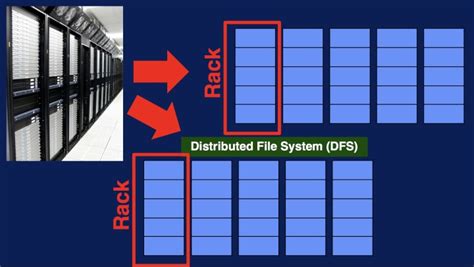大数据分析人工智能算法
Big data analytics algorithms play a crucial role in extracting meaningful insights from vast and complex datasets. These algorithms are designed to handle the challenges posed by largescale data, including volume, variety, velocity, and veracity. Let's delve into some key algorithms used in big data analytics and their applications across various industries.
1. MapReduce
MapReduce is a programming model and associated implementation for processing and generating large datasets with a parallel, distributed algorithm on a cluster. It consists of two primary steps:
Map
: This step processes input data and generates a set of keyvalue pairs.Reduce
: This step aggregates the keyvalue pairs, producing a new set of output data.

Applications: Used extensively in distributed computing environments like Hadoop for largescale data processing tasks such as log analysis, text processing, and data aggregation.
2. Machine Learning Algorithms
Machine learning plays a vital role in big data analytics, enabling systems to learn from data and make predictions or decisions. Common algorithms include:
Linear Regression
: Used for predicting numeric values based on input features.Decision Trees
: Effective for classification and regression tasks, breaking down data into smaller subsets.Random Forest
: Ensemble learning method using multiple decision trees for more accurate predictions.kMeans Clustering
: Unsupervised learning algorithm for grouping data points into clusters based on similarity.Neural Networks
: Deep learning models capable of learning complex patterns from large datasets.
Applications: Applied in various domains such as finance (for fraud detection), healthcare (diagnosis and treatment planning), ecommerce (recommendation systems), and more.
3. Graph Processing Algorithms
Graph algorithms are used for analyzing relationships between entities in networks represented as graphs. Examples include:
PageRank
: Determines the importance of web pages in a network based on the structure of hyperlinks.Community Detection
: Identifies clusters or communities of nodes within a graph.Shortest Path Algorithms
: Finds the most efficient path between nodes in a graph.
Applications: Social network analysis, recommendation systems, transportation network optimization, etc.
4. Natural Language Processing (NLP) Algorithms
NLP algorithms process and analyze large volumes of text data. Key algorithms include:
Sentiment Analysis
: Determines the sentiment (positive, negative, neutral) of text.Named Entity Recognition (NER)
: Identifies named entities like names, organizations, locations, etc., in text.Topic Modeling
: Extracts topics from a collection of documents.Language Translation
: Translates text from one language to another.
Applications: Customer feedback analysis, content recommendation, chatbots, language translation services, etc.
5. Realtime Stream Processing Algorithms
These algorithms handle continuous streams of data in realtime, enabling immediate actions or analysis. Examples include:
Sliding Window
: Computes aggregates (like averages, counts) over a sliding window of data.Bloom Filters
: Efficiently tests whether an element is a member of a set.CountMin Sketch
: Estimates the frequency of elements in a data stream.
Applications: Internet of Things (IoT) data analysis, realtime fraud detection, monitoring network traffic, etc.
Conclusion
Big data analytics algorithms are diverse and powerful tools for extracting insights and value from massive datasets. Understanding these algorithms and their applications is essential for businesses and organizations looking to leverage big data for decisionmaking, innovation, and optimization across various industries.
标签: 大数据分析人工智能算法 大数据算法模型 大数据分析模型有哪些 大数据分析模型有几种
相关文章
-
景顺成长,探索中国城市化进程中的绿色发展之路详细阅读

在21世纪的今天,城市化已成为全球范围内不可逆转的趋势,中国,作为世界上人口最多的国家,其城市化进程尤为引人注目,随着经济的快速发展,城市化带来的问题...
2025-10-01 198
-
深度解析,股票000777中核科技的投资价值与未来展望详细阅读

在当今的投资市场中,股票投资无疑是一个热门话题,而在众多股票中,股票代码为000777的中核科技因其独特的行业地位和发展潜力,吸引了众多投资者的目光,...
2025-09-30 240
-
深圳证券交易所交易规则,投资市场的指南针详细阅读

亲爱的读者,想象一下,你正站在一个繁忙的十字路口,四周是熙熙攘攘的人群和川流不息的车辆,每个人都在按照交通规则行事,红灯停,绿灯行,黄灯亮起时,大家会...
2025-09-30 200
-
基金202005,揭秘投资背后的逻辑与策略详细阅读

在投资的世界里,基金是一种备受瞩目的投资工具,它以其多样化的投资组合、专业的管理团队和相对稳定的收益吸引了众多投资者的目光,我们将深入探讨基金2020...
2025-09-30 193
-
探索中国平安行销,策略、实践与未来趋势详细阅读

在当今竞争激烈的市场环境中,行销策略对于企业的成功至关重要,中国平安,作为中国领先的金融服务集团,其行销策略不仅在国内市场上取得了显著成效,也为全球行...
2025-09-29 200
-
深入解析数码视讯股票,投资价值与市场前景详细阅读

在当今数字化时代,数码视讯行业作为信息技术领域的重要组成部分,正逐渐成为投资者关注的焦点,本文将深入探讨数码视讯股票的投资价值与市场前景,帮助投资者更...
2025-09-29 242
-
悦康药业,创新与责任并重,引领健康未来详细阅读

在当今这个快节奏、高压力的社会中,健康成为了人们越来越关注的话题,而在医药行业中,有这样一家企业,它以创新为驱动,以责任为担当,致力于提供高质量的药品...
2025-09-29 192
-
深度解析,定向增发股票背后的资本游戏与投资策略详细阅读

在资本市场的棋盘上,股票的每一次变动都牵动着投资者的神经,定向增发作为一种特殊的融资方式,因其能够为上市公司带来资金的同时,也为投资者提供了新的投资机...
2025-09-29 196
